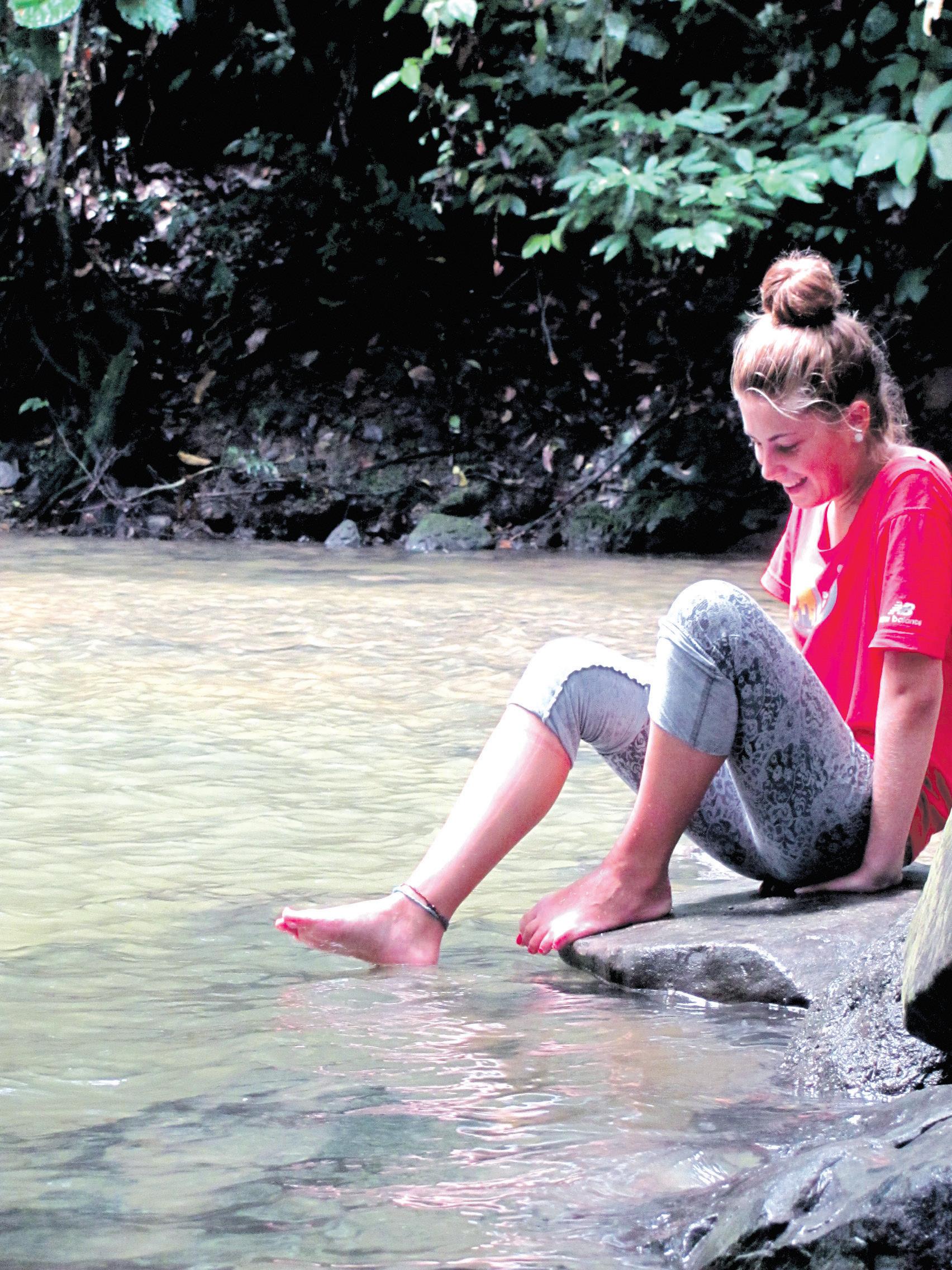
4 minute read
Where the wild things
from 2012-04 Sydney (1)
by Indian Link
BY PeTRA o’neIll
So which country produces the best hikers?” I asked.
“Slovenia!” replied Ryan our guide, as he nonchalantly spun his index finger around his belly button to dislodge a tiger leech embedded there. I was in the Danum Valley Conservation Area in Borneo, dressed from top to toe in leech-proof hiking gear, in one of the world’s most remote rainforests and best places for viewing wildlife.
Borneo, the third largest island in the world is shared by three countries: Indonesia, Brunei and the Malaysian states of Sabah and Sarawak. While much of it has been tamed by logging and palm oil plantations, Borneo remains one of the most dramatic and exciting destinations, an island of dense prime growth rainforest, indigenous tribes, abundant birdlife and mammals including pygmy elephants, clouded leopards, gibbons, orang-utans and proboscis monkeys.
In search of orang-utans
I had persuaded my 17-year-old daughter Nicky to join me on a journey to search for orang-utans that began in Kota Kinabalu. At the Shangri-La Rasa Ria Resort, three well-cared-for baby orangutans would swing down from the jungle canopy of the resort’s expansive nature reserve for their daily feed. In collaboration with the State Wildlife Department, the resort facilitates rehabilitation programmes for endangered species.
A six-hour bus ride took us past the majestic Mt Kinabalu before arriving in Sandakan, a bustling, vibrant city where we stocked up on leech socks. The next morning we visited the Sepilok Orangutan Rehabilitation Centre, a 4,500 hectare reserve for rescued orang-utans. The orang-utan gets its name from the Malay words for ‘‘man’’ (orang) and ‘‘jungle’’ (utan). Found only on Borneo and the Indonesian island of Sumatra, orphaned orang-utans rescued from illegal hunting or found at logging sites are taught survival skills and eventually returned to a protected rainforest habitat.
A twinge of home
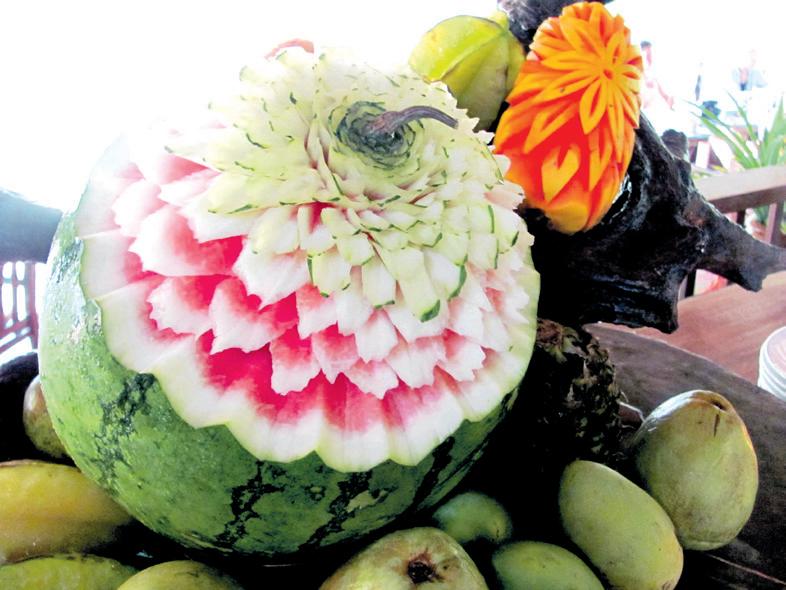
We met our guide Mirawan and travelled by speedboat from Sandakan to Sukau upstream along the mangrove-lined Kinabatangan River, Sabah’s longest at 560 kms. Along lowland rainforest we sped, pausing to view sunning crocodiles, proboscis and macaque monkeys, egrets and hornbills, hawks and eagles, the area being renowned as having the largest concentration of wildlife in Malaysia.

“Welcome to Sukau Rainforest Lodge!” was not what I was expecting, spoken with an unmistakable Aussie twang. Our amiable manager and head chef was Brett from Gosford, who had arrived on holiday 3 years ago and stayed. With no time to unpack, we enjoyed afternoon tea with hot banana fritters before joining Mirawan for a late afternoon cruise in a small wooden boat to view more wildlife. There were many proboscis monkeys, distinguished by their long droopy noses and white tails scampering along branches in the treetops, a female orang-utan with her baby, many mischievous macaques and then the most amazing sight of all – perhaps 30 or more pygmy elephants grazing along the river’s edge, only a metre or so away from us. The pygmy elephant is small, with large ears and straight tusks, and is genetically distinct from other Asian elephants. “You are so lucky, the elephants don’t always come,” said Mirawan. Hornbills and egrets flew across the sky in front of us, the light fading under the thick forest cover.
After a splendid dinner overlooking the river, we retired with Brett suggesting that a visit by the elephants during the night was possible. “They like to look through the windows, perhaps they are just curious!” he said.
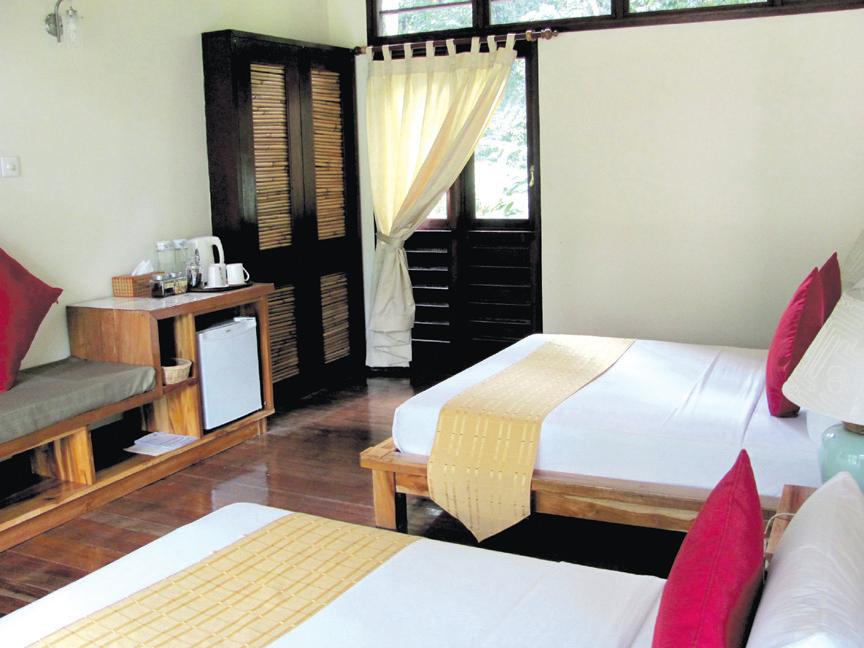
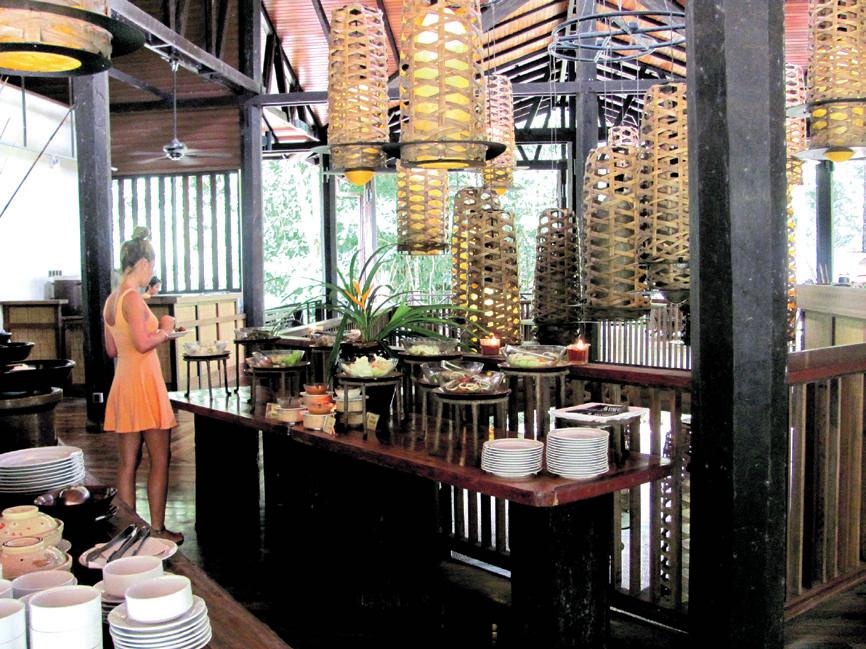

Up close with creepy crawlies
“Don’t look up and talk,’’ said Mirawan the next morning, as we entered the Gomantong Caves, the largest in Sabah. The ground was covered with a thick carpet of spongy, smelly, moist droppings left by the estimated 100,000 bats and swiftlets that live here. Flying rapidly in and out of the cave’s entrance were the tiny swiftlets whose nests bring high prices for bird’s nest soup.
“Do you want to walk across or on the boardwalk?” asked Mirawan and I pointed my flashlight at a surface which appeared to be a mass of moving cockroaches. “Look at this,” said Mirawan, and with that he spat. Thousands of creepy crawlies converged on the spot. They were everywhere, as where the centipedes. I felt goosebumps and was relieved to leave. Driving past Palm Oil Plantations, we arrived at Lahad Datu, our driver depositing us at the Borneo Rainforest Lodge office for our three-hour journey through the rainforest by 4WD.
Rainforest retreat
Spanning 438 square kilometres of primary lowland dipterocarp rainforest, the Danum Valley Conservation Area is recognised as one of the world’s most complex ecosystems and sanctuary to rare and endangered flora and fauna. Far removed from human habitation it is renowned for its rich variety of plants and wildlife, with over 275 species of birds and 110 mammals including the rare Sumatran rhinoceros, pygmy elephants, clouded leopards and orang-utans.
Ryan met us on arrival and invited us to join him on a walk through the rainforest. It was damp and cool, and for the next two days he guided us on walks to waterfalls for refreshing swims, to viewing platforms, tree top canopies and along high escarpments for amazing views of the river and rainforest below. Ryan had studied Mechanical Engineering, but after graduating he found that he missed the rainforest, where his father had often taken him as a young boy. Clearly he loved being here and was keen to share his considerable knowledge. We saw many species of orchids, pitcher plants, ferns, begonias and plants used by indigenous tribes people for medicinal uses. We saw flying lemurs, gibbons, proboscis monkeys and orang-utans including Abu, a large male who lives near the lodge high up in the tree canopy.
Ryan talked optimistically of the survival of Borneo’s endangered species. The Sabah Wildlife Department in collaboration with industry groups are looking at the further creation of wildlife corridors, better enforcement against poaching and the conservation of forests.
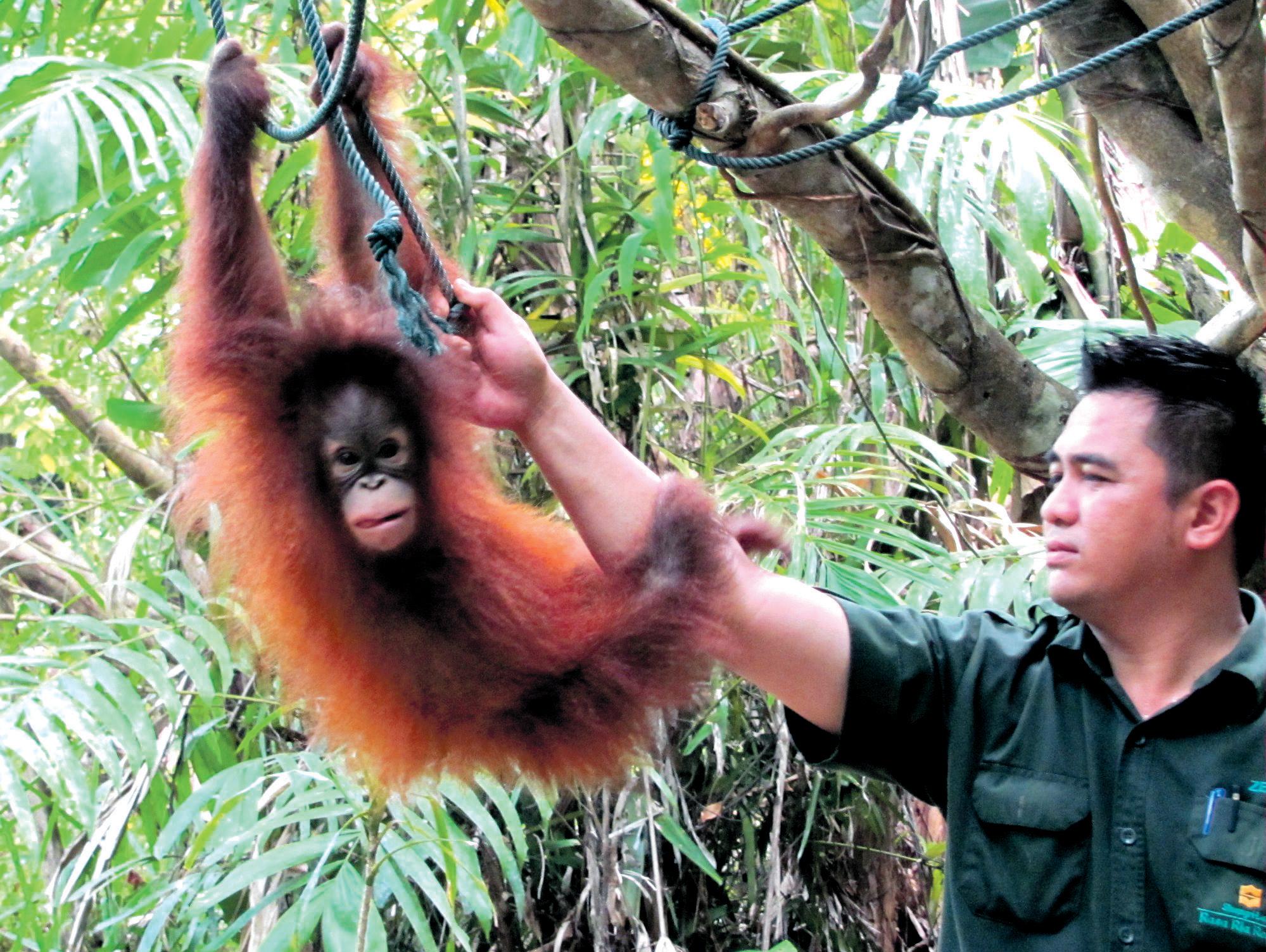
Seeing orang-utans, proboscis monkeys and pygmy elephants up close in their native habitat was one of the most amazing travel experiences I’ve ever had. And as two adventurous travellers had said to me several months earlier, “You really should go there sometime.” I’m glad I took their advice.








